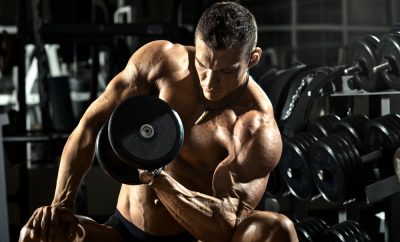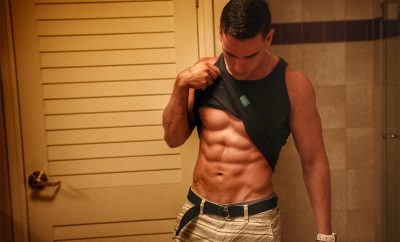
Fitness Tips
Lessons in Lifting for Beginner Lifters
When you see the likes of Mr. Olympia in the gym, you can either be intimidated or inspired, perhaps even both, by their truly impressive physique! If you’re intimidated by their gains in comparison with your puny body, you shouldn’t be as they also started where you are now. If you’re inspired by their accomplishments, you’re starting on the right direction.
But wherever category you belong, you will find the following lessons in lifting as uplifting in both the physical and mental aspects.
Know Your Body First
Many beginners start lifting weights without an understanding of their body particularly their muscles and joints. This is as dangerous as it seems because there are many things that can go wrong when lifting weights with an ignorant mind – from sprains and strains to fractures, among other serious injuries.
Your first step then should be to learn the basics of your body specifically its major muscle groups, such as the pectorals, deltoids, triceps, biceps, abdominals, glutes, quads, and hamstrings, among others. Each of these major muscle groups consists of several individual muscles, too, such as the deltoids consisting of three heads, the biceps with two heads, and the quads with four muscles.
Each weightlifting exercise has its specific uses, thus, the classification of isolation and compound exercises. Isolation exercises work a single muscle while compound exercises target multiple muscle groups – and each exercise has its own specific movement pattern, too.
The bottom line: You have to know your body including its muscles and joints, as well as how each one works in relation to the other. You will also find that said information is useful in determining your fitness level and goals so that you can make a personalized workout program. In fact, your personal trainer at a David Barton Gym will ask about these matters for this reason.
Learn the Basics of Lifting
As a beginner, your ignorance shouldn’t be taken against you but it will definitely work against your favor in terms of increased risk of injuries. You must then also learn the basics of lifting by reading books, watching videos, and observing more experienced weightlifters – or better yet, hiring an expert bodybuilder to take you through the beginner’s program.
Here are the most important basics that you should keep in mind at all times when weightlifting:
- Exhale when lifting or pushing the weight.
- Inhale when lowering the weight or returning to the movement’s starting position.
- Avoid licking out your joints when holding weights, such as a barbell, in their top position to reduce the risk of injury.
- Lower the weights a bit slower than when lifting them.
- Reverse direction as smoothly as possible when the weights are in the bottom position. Using momentum for bouncing it up can mean injuries, too.
When in doubt about the use of a certain type of weight equipment or machine, you should always ask for proper guidance. There’s no shame in asking – and, in fact, the personal trainers will appreciate it because it means lesser incidence of injuries in their workplace.
Choose the Exercises with the Highest Anabolic Benefits
Weightlifters use two terms to refer to strength training exercises. First, anabolic refers to the process of muscle growth and development – or in layman’s terms, building up your muscles. Second, catabolic means the process of breaking down muscles.
Between the two, you want to engage in exercises that provide the highest anabolic benefits. You are, after all, building muscles so it makes sense to choose anabolic exercises.
As previously mentioned, there are also two types of resistance exercise, namely, the isolation and compound exercises. These are the crucial tips to keep in mind:
- Perform more compound or multi-joint exercises since these build several muscles simultaneously. These includes deadlifts, overhead presses, and dips, to name a few.
- Perform compound exercises at the beginning of your workouts because your energy level is at its highest. Follow with isolation or single-joint exercises toward the end of your workout because these don’t require as much effort. These exercises include bicep curls, lateral raises, and leg curls.
You must also ensure that all of your major muscle groups are being worked out almost equally. You don’t want to end up looking like a caricature of a bodybuilder – heavy upper body on legs of stilts, for example. You want to achieve a beautiful symmetry between your upper and lower body so that you’re in proportion.
You should designate a day for focusing on certain parts of your body, such as a leg day, an arms day, and a chest day. You and your personal trainer will design the best workout program for your age, physical condition, and bodybuilding goals. You will also adjust your workout program as your physique changes, as well as to prevent plateauing.
Most important, you have to mix strength training with cardio and flexibility training. You will find that the latter will improve your gains in the former, not to mention that you will have a more rounded fitness condition.





0 comments